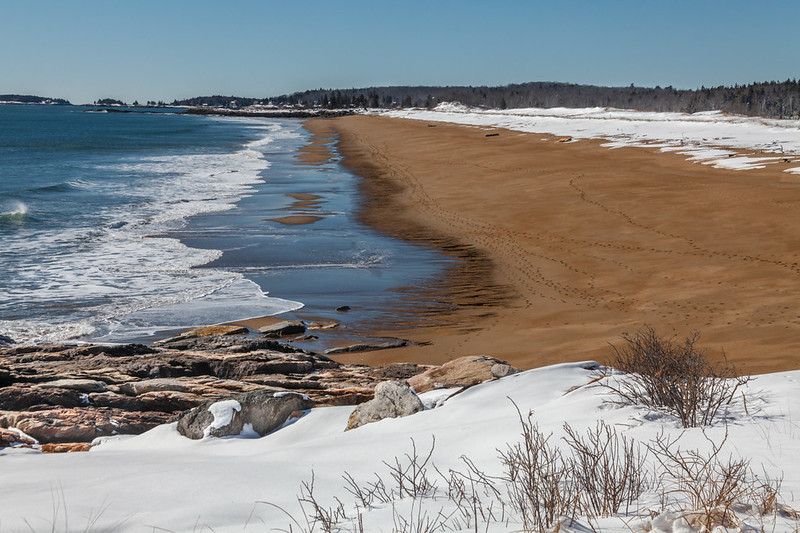One night in February, Antonio Villamizar was woken up suddenly in the small hours by a phone call. “Hurry up, your restaurant is being swept away,” he was warned. He jumped out of bed and rushed with his sons to his beachfront restaurant, only to find that it had gone.
While sand dunes only make up about 2 percent of Maine’s rocky coast, they’re an essential part of some of the state’s most popular summer destinations, including Popham Beach and Reid State Park in the midcoast, as well as numerous southern Maine communities.
Dunes act as natural barriers between communities and the ocean, but when they’re washed away by intense storms, homes, businesses and infrastructure near the shore are left more vulnerable to flooding and other damage.
After an intern at the Maine Geological Survey surveyed Maine’s 42 sandy beaches last summer — looking for the average distance between dunes and the shoreline at each beach — the agency recently released her findings through its online beach mapping program.
They show that from 2023 to 2024, the state’s dunes receded an average of 26 feet. Popham Beach was among the hardest-hit areas, seeing erosion of up to 124 feet in places and an average loss of 94 feet. A section of Reid State Park lost an average of 54 feet.
Peter Slovinsky, a coastal geologist with the Maine Geological Survey, said some of the erosion was record-breaking.
“It was a pretty unique winter in the fact that we had a really large storm in December and then two record-setting storms in January,” he said. “It was kind of like the one-two-three punch for our beaches and dunes this year…”
